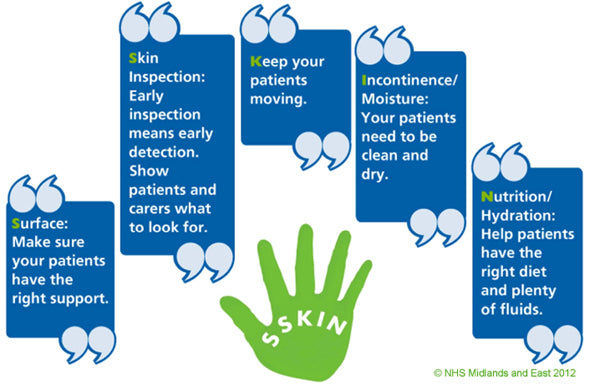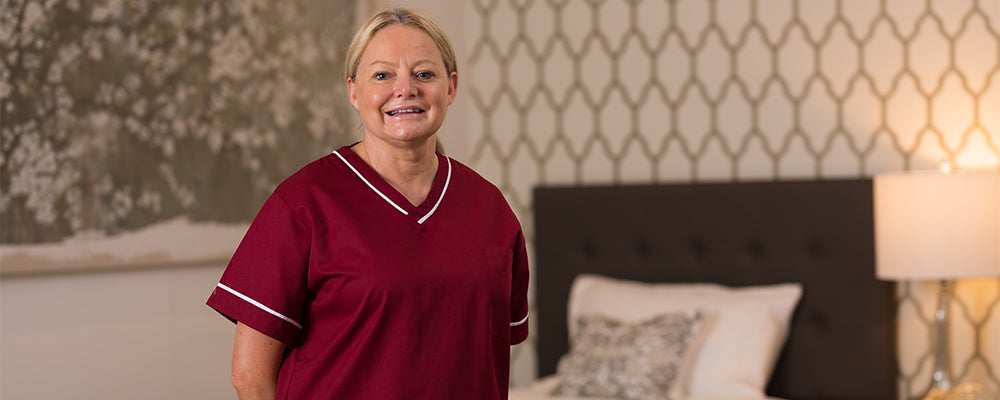Background of Pressure Ulcers within the Care Industry
Pressure ulcers remain a significant issue within UK care settings due to a variety of factors. The most common reasons are that many patients are immobile, have poor skin integrity, or medical conditions that increase their risk of developing pressure sores.
Despite the improvements taking place in pressure ulcer prevention (PUP) across many UK care facilities, pressure ulcers continue to affect 20% of all patients in hospitals, nursing homes and residential homes.
Additionally, there may be a lack of staff education and training on pressure ulcer prevention and management, inadequate resources for pressure ulcer prevention, and a lack of consistent and effective pressure ulcer prevention policies across different care settings.
Despite the implementation of various programs and initiatives aimed at reducing pressure ulcer rates, the problem persists, indicating that there is still much work to be done to improve pressure ulcer prevention and management in UK care settings.
The Cost of Pressure Ulcers
Preventing ulcers developing will greatly improve all care for vulnerable patients, both for the patient themselves and the caregiver. Effectively preventing pressure sores is far more cost-effective and less of a strain on resources than allowing them to develop. It is estimated that each developed pressure ulcer adds additional costs of care of over £4,000.
Pressure sores are the single most costly chronic wound to our National Health Service, costing £1.4-2.1 billion every year. 186,617 patients develop a pressure sore in hospitals each year, putting a significant strain on resources.
The majority of pressure ulcers are avoidable
Research presented by the NHS's 'Stop the Pressure' campaign suggests that a massive 95% of all pressure ulcers can be avoided with effective patient care. With the correct patient care, we could be saving millions of pounds and improving care for patients, carers and care operators.
"95% of pressure ulcers are preventable by using SSKIN"
An Introduction to SSKIN
The SSKIN bundle is designed as a resource pack which aids in the assessment and care for those at risk of developing pressure ulcers.
Designed to be used across all areas of care in the community, the objective of the SSKIN bundle is to avoid pressure injury from occurring, and in instances where it does, identify the problems to prevent further deterioration of the pressure ulcer and promote healing.
SSKIN: 5 simple steps
The SSKIN acronym shows five actionable steps that greatly assist the prevention of pressure ulcers. The five letters stand for:
- Surface: Ensure the surfaces supporting your patient offer sufficient pressure relief
- Skin inspection: Early inspection enables early detection which is when ulcers are the easiest to treat
- Keep your patients moving: Regular body movement assists blood flow and redistributes pressure
- Incontinence/moisture: A clean and dry patient is less likely to develop pressure ulcers
- Nutrition/hydration: The right diet and plenty of fluids keep the patient's skin healthy

Stop the Pressure Programme Campaign and Curriculum
The National Stop the Pressure Programme for England (STTP) is a system-wide improvement programme across both acute and community settings. It works in collaboration with key partners within the social services sector and care home settings and is integrated within the NHS improvement as part of a wider Patient Safety Campaign.
1: a framework which can be used in academic settings covering aims, learning outcomes, theories and skills.
2: a framework for clinical staff that are delivering education within a clinical setting (this will be across three levels – fundamental, intermediate and advanced).
3: a framework to guide practitioners through individual learning on how to make the best content through reflective practice as well as how to capture their learnings to support others.
As such, the SSKIN framework is widely used within many practices today and makes the process of preventing pressure care ulcers visible to all.
Video summary by NHS Midlands and East
The SSKIN acronym was launched by NHS Midlands and East as part of their ambition to make life better for patients and the campaign has been rolled out nationally. View a video summary of SSKIN created by the trust...
The SSKIN Bundle
The Isle of Wight NHS Trust has created a reference guide for community health care teams that provides detailed guidance on the SSKIN concept.
View the NHS IoW SSKIN Bundle Guide [PDF]
How Opera Can Support Your Pressure Care Needs
With over 20 years of experience, our team of experts are here to help our pressure care needs. The Opera pressure care range includes mattresses, cushions and a lateral turning system to support pressure care treatment and prevention.
Working with Industry Tissue Viability Experts

We work in collaboration with leading TVN Consultant, Joy Tickle who has over 35 years of experience working within the NHS and community. Joy’s wealth of real-life experience in practice allows us to develop a pressure care range which delivers effective pressure relief. Furthermore, Joy can share her advice and guidance for complex pressure care cases.
Learn more about Joy and her clinical review of our pressure care range:
Impulse Hybrid Pressure Care Mattress
AutoTurn Lateral Turning System
Discover Pressure Relief Prevention
and Treatment at Home








